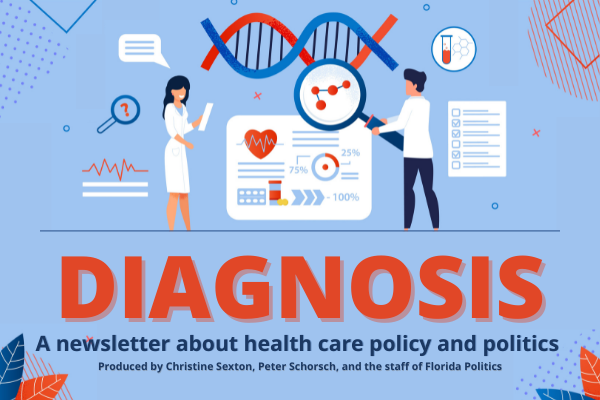
Welcome back to Diagnosis, a vertical that focuses on the crossroads of health care policy and politics.
— Eeek —
Florida is the third least vaccinated state in the nation, a new WalletHub analysis shows.
To determine the overall rankings, WalletHub analyzed 17 weighted metrics across three main categories: children and teenage immunization rates, adult immunization rates and uptake disparities/influencing factors. The analysis ranks the performance in each of the three areas to find the overall ranking.
Florida ranked second to last in adult immunization. Only Mississippi had lower rates. Metrics in that category include the share of adults with tetanus vaccines, shingle vaccines and flu vaccines, as well as the share of adults considered “increased risk” who are vaccinated against the flu.
Only four states had lower children and teenage immunization rates than Florida: Wyoming, Alaska, Mississippi and Oklahoma. The metrics in that category include the rate of children vaccinated against four strains of meningococcal bacteria that cause meningitis and blood poisoning, the number of vaccinations required for entrance into kindergarten, whether minors can access vaccines without parental consent, completion of the human papilloma vaccine series, and share of children under three who have completed the seven-vaccine series.

Vaccines protect people from diseases before coming into contact with them by training the body’s immune system to create antibodies. When exposed to the germ that causes the condition in the future, a vaccinated person’s immune system can quickly destroy it.
Data was collected from the U.S. Census Bureau, the Centers for Disease Control and Prevention, the Health Resources and Services Administration and the Commonwealth Fund, ProCon.org and IBTimes.
Meanwhile, Florida ranked 18th in the uptake disparities/influencing factors category. The metrics in that category include, among other things, the number of people living in primary care health professional shortage areas, the percent of people without insurance and change in the childhood immunization uptake between 2015 and 2020.
The WalletHub analysis did not look at vaccination rates for COVID-19.
___
I welcome your feedback, questions and especially your tips. You can email me at SextonHealthNewsletter@gmail.com or call me at 850-251-2317.
— A not-so-rosy outlook —
Gov. Ron DeSantis and Republican legislative leaders have discussed the state’s record budget surpluses. But there’s one clear trouble spot state economists and budget staff flagged — the state’s health insurance program for state workers and universities.
Last week the Legislative Budget Commission officially signed off on a new three-year financial outlook for the state. The top-line numbers are truly impressive, with a projected general revenue budget surplus of $13.5 billion in the 2023-24 fiscal year to $15.5 billion in the 2025-26 fiscal year.
When economists draw up the outlook, they look at the incoming revenues and expect to spend them on key areas such as education and health care. The three-year forecast tapped three critical needs areas that will drive spending in the years ahead: increased public-school enrollment, Medicaid enrollment, and increased benefits for state employees.

That last item was projected to cost the state $931 million over three years, more than three times higher than the current state Medicaid cost projection. That increased cost is driven primarily by a projected deficit in the State Employees Health Insurance Trust Fund, which is used to pay for the $3.2 billion program that provides health insurance benefits to approximately 350,000 state and university employees, retirees and their families.
The fact that there’s a looming deficit in the program was first projected over the Summer by economists. But now, it’s considered one of the more significant budget quandaries the Governor and Legislature will confront during the 2023 session.
For years now, lawmakers have generally resisted raising the cost of employee health insurance premiums and have instead increased the amount of money coming from general revenue to respond to rising costs.
However, the Department of Management Services is supposed to contract for a comprehensive cost containment analysis due in January. The question is whether that will be a prelude to serious changes next year given the size of the projected trust fund deficit or if legislators will instead opt to use the large surplus to fill the gap.
— Another fast track? —
Are members of Florida’s medical boards fast-tracking proposals to create a Florida-specific standard for the treatment of gender dysphoria?
The boards are considering developing state-specific standards for treating gender dysphoria at the behest of state Surgeon General Joseph Ladapo. The DeSantis administration has already amended state Medicaid regulations to ban providers from reimbursing for treating gender dysphoria, regardless of the patient’s age.

The administration wants the medical boards to adopt state-specific regulations to make it a practice violation for doctors to treat gender dysphoria in people under 18.
The Florida Boards of Medicine and Osteopathic Medicine have scheduled a joint rules committee meeting Oct. 6 in Tampa. That’s one day before the entire Board of Medicine meeting and less than a week after a Sept. 30 meeting of the joint rules committee in Tallahassee. The four-hour Tallahassee public meeting will include a combination of public testimony and “presentations from subject matter experts,” according to the public notice. It’s unclear what experts the medical boards will hear from because the state hasn’t published details.
An agenda for the Oct. 6 joint rules committee meeting in Tampa also had not been posted at press time. According to the notice, the meeting will start around 4 p.m. The notice does, however, caution the meeting can be canceled before Oct. 6.
— A closer look —
Just how common is it for Medicaid to reimburse for gender-affirming care?
Agency for Health Care Administration data shows not very.
AHCA data provided to Florida Politics shows the number of adults and children receiving gender-affirming care and the care Medicaid reimbursed for the fiscal year (FY) 2017-18 through FY 2021-2022.
Medicaid does not provide any benefits to children without parental consent. Children are defined as beneficiaries under 21 years of age, meaning the children category could include information on 18,19 or 20-year-old beneficiaries.

Data show that 12 children and 13 adults underwent surgical procedures in FY 21-22 that Medicaid reimbursed. The most common procedure for both groups was a simple mastectomy, with three children and six adults undergoing the process sometime between July 1, 2021, and June 30, 2022.
Medicaid covered the removal of the testis for two children and two adults and the amputation of a penis for one adult and one child. The safety net program for the poor, elderly and disabled also paid for the surgical construction of two artificial vaginas, one for a child and one for an adult.
Doctors performed 15 gender-affirming surgical procedures on 12 children, in addition to 19 on adults in FY 21-22.
AHCA supplied data that show 1,775 prescriptions for 15 minutes of behavioral therapy services were written for 233 children. Far fewer adults received prescriptions for 15 minutes of behavioral therapy services than children, with 320 prescriptions written for 33 adults in FY 21-22.
However, data show the number of children and adults receiving treatment has increased in recent years. For instance, in FY 2017-2018, 1,024 prescriptions for 15 minutes of behavioral therapy services were written for 143 children. Thirty-three adults received 320 prescriptions for the therapy services in the same year.
The data also show the number of children and adults receiving prescriptions for estrogen and testosterone increased in FY 21-22 from previous years. In 2021, 391 prescriptions for estrogen were written for 151 children compared to 185 prescriptions for 72 children in FY 17-18.
In FY 21-22, 233 adults received 688 estrogen prescriptions. By contrast, 148 adults received 392 estrogen prescriptions in FY 17-18.
More adults received written estrogen prescriptions than children, a data review shows. But the same is not valid for testosterone.
In FY 21-22, 346 children were given 925 prescriptions for testosterone. By contrast, 143 adults were written 373 prescriptions during the same period. Again, it’s an increase from FY 17-18 when 130 children were written 330 prescriptions for testosterone and 63 adults were written 174 prescriptions for testosterone.
Puberty blockers are only given to children. AHCA data show that 180 prescriptions for puberty blockers were written for 55 children in FY 21-22. That’s an increase from FY 17-18 when 15 beneficiaries had written 55 prescriptions.
The post Diagnosis for 9.14.22: Checking the pulse of Florida health care news and policy appeared first on Florida Politics – Campaigns & Elections. Lobbying & Government..
Republished with permission [/vc_message]
This article originally appeared here and was republished with permission.












